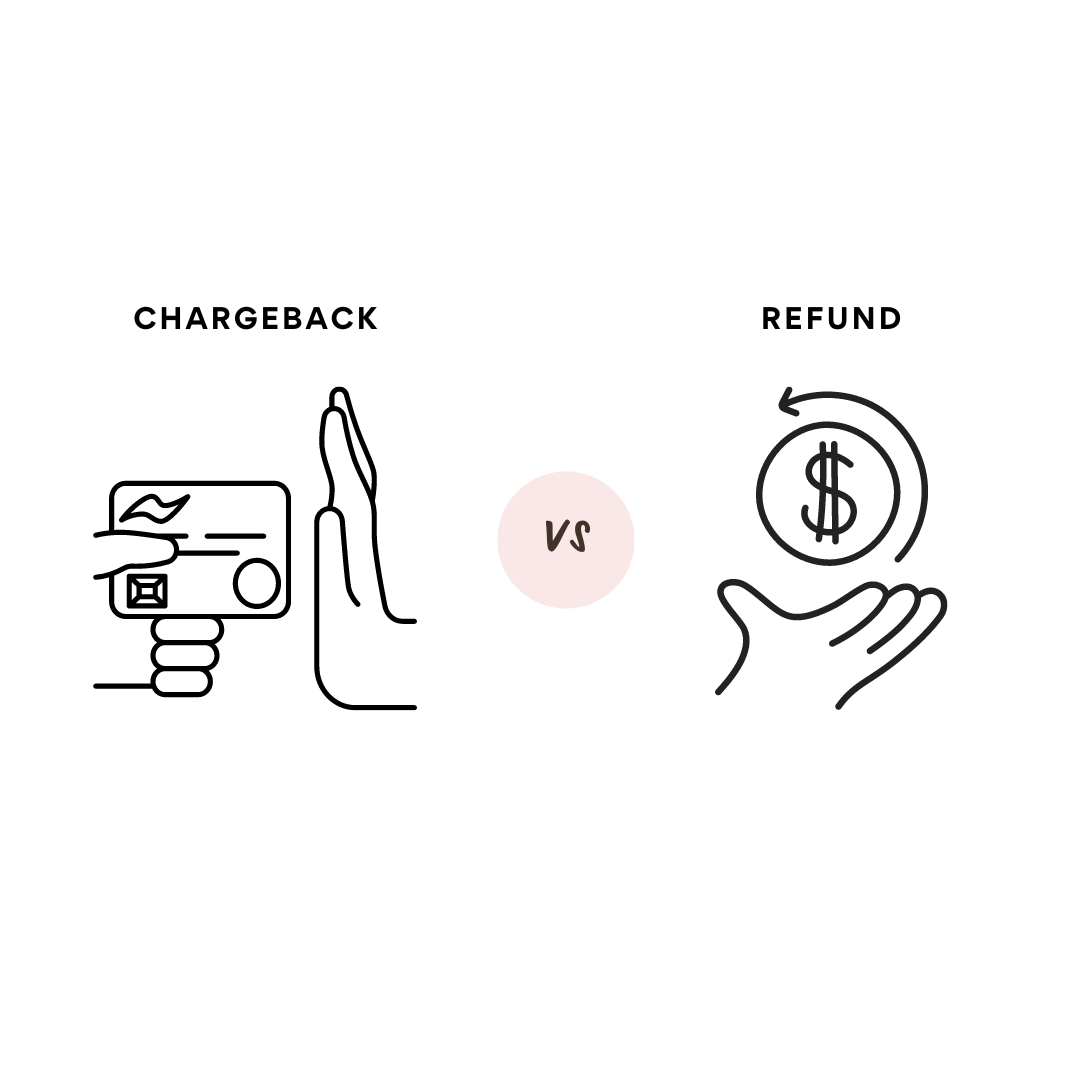What is a Merchant Chargeback?
A merchant chargeback can be considered a form of security for a customer, but a financial burden for a business. New businesses typically aren’t aware of chargebacks, so they don’t know how to prepare to deal with them. This guide is here to help them understand a chargeback and what to do about them.
A merchant chargeback is a dispute initiated by a customer regarding a transaction that they believe was unauthorized or fraudulent. The customer contacts their bank or credit card company and requests that the transaction be reversed, which leads to the merchant’s account being charged back for the amount of the disputed transaction.
Chargebacks can occur for a variety of reasons, including fraudulent use of a credit card, a customer dispute over a product or service, or an error in billing. Merchants who receive chargebacks are typically required to provide evidence that the transaction was legitimate and that the customer received the product or service as promised.
If a merchant is unable to provide evidence that the transaction was legitimate or that the customer received the product or service, the chargeback will be upheld, and the merchant will be liable for the amount of the transaction, as well as any fees associated with the chargeback.
To prevent chargebacks, merchants should ensure that they have clear and transparent billing policies, promptly respond to customer inquiries and complaints, and implement fraud detection and prevention measures. In cases where chargebacks do occur, merchants should work with their payment processor and bank to provide evidence and dispute the chargeback if possible.
Common Reasons for Merchant Chargebacks
Merchant chargebacks can happen often, so it is essential to understand why they might happen. Some of the most common reasons a customer requests a merchant chargeback include:
- Fraud. If a customer uses a stolen credit card or engages in other forms of fraud, the merchant may receive a chargeback
- Non-receipt of product/service. If a customer does not receive the product or service they paid for, they will want their money back and request a chargeback
- Product/Service not as described. If a customer receives a product or service that is different from what was advertised or promised, they may dispute the charge and request a chargeback
- Technical problems. Technical problems such as processing errors, expired authorizations, or double charges can result in chargebacks
- Processing problems. If a merchant processes a transaction incorrectly or duplicates a charge, the customer will request a chargeback
- Unauthorized charges. If a customer notices unauthorized charges on their credit card statement, they can dispute the charges
- Confused with refund. When a customer isn’t happy, or just doesn’t like, the product or service they receive, they might request a chargeback when they really meant to request a refund

How Does the Chargeback Process Work?
The chargeback process is designed to protect consumers from unauthorized or fraudulent transactions, but it can be a complicated and time-consuming process for both merchants and customers.
Here is a general overview of how the chargeback process works:
- Customer Disputes a Charge. The chargeback process begins when a customer contacts their bank or card issuer to dispute a charge on their account, likely for one of the reasons listed above.
- Bank or Card Issuer Investigates. Once the customer files a dispute, the bank or card issuer will investigate the claim. They will review the transaction details, including the date, amount, and merchant information, and may contact the merchant to request additional information.
- Merchant Responds. If the bank or card issuer contacts the merchant, the merchant will have an opportunity to respond to the dispute. They may provide evidence that the charge was legitimate, such as a receipt or shipping information, or argue that the customer received the goods or services they paid for.
- Decision Is Made. After reviewing all of the information, the bank or card issuer will make a decision about the chargeback. If they find in favor of the customer, the merchant’s account will be debited for the amount of the disputed charge, plus any associated fees. If they find in favor of the merchant, the chargeback will be denied and the customer will be responsible for the payment.
- Appeals. If either party is dissatisfied with the decision, they may appeal the chargeback. The process for appealing a chargeback can vary depending on the bank or card issuer’s policies.
It’s worth noting that the chargeback process can be time-consuming and costly for merchants. In addition to losing the revenue from the disputed transaction, merchants may also be charged fees by their payment processor or bank for processing the chargeback.
To avoid chargebacks, merchants should be transparent about their refund policies, provide clear descriptions of their products or services, and respond promptly to customer inquiries and complaints.
Difference Between Merchant Chargeback and Refund
While they might seem like the same thing, merchant chargebacks and refunds are two different processes. The main difference between the two is the party that initiates the transaction, the reason for the transaction, and the impact on the merchant.
A merchant chargeback occurs when a customer disputes a transaction and initiates a chargeback through their bank or credit card issuer. The bank or credit card issuer will investigate the claim and if they find it valid, they will reverse the transaction and return the funds to the customer. The merchant is then responsible for providing evidence to dispute the chargeback and potentially recover the funds.
A refund is initiated by the merchant, often in response to a customer request or because of a mistake or error on the merchant’s part. Refunds can also be given for returned goods or canceled services.
When a merchant issues a refund, they initiate a transaction to return the funds to the customer’s account. Refunds can be processed through the payment gateway or payment processor used by the merchant, and the merchant is responsible for covering any associated fees.

Preventing Merchant Chargebacks
Merchant chargebacks can be a major headache for businesses of all sizes.When a customer disputes a charge made on their credit card, and the card issuer refunds the customer’s money, this can leave the merchant on the hook for the cost of the goods or services they provided, as well as any associated fees.
To prevent merchant chargebacks, businesses should take proactive steps to reduce the likelihood of disputes. By following these tips, businesses can reduce the likelihood of chargebacks and protect their bottom line.
Remember, prevention is the key to avoiding disputes and maintaining positive customer relationships. Keep these tips in mind when trying to prevent the number of chargebacks a business experiences.
Clear and Accurate Descriptions
Businesses should make sure their customers know exactly what they’re buying. Make sure all product descriptions are clear and accurate, including all details of the product’s features, benefits, and limitations.
Communicate Shipping and Delivery Times
Businesses should be open and honest about how long it will be until customers receive their product or service. For example, if a business sells a product that is made to order and has a manufacturing time of five business days, this needs to be disclosed accurately.
Provide Customer Service
Make it easy for customers to contact the business with any questions or concerns. Respond to inquiries promptly and courteously, and ensure the business does everything it can to fix any issues that customers may have.
Implement Fraud Detection Tools
Fraudulent transactions can lead to chargebacks, so it’s important to use tools like Address Verification Service (AVS) and Card Verification Value (CVV) to verify that the customer is who they say they are. Doing so will significantly decrease the chance of fraud.
Require Signatures
For high-value purchases, require customers to sign for the delivery. Make sure this policy is listed on the business website in multiple places, making it clear a signature will be required. This can help reduce the likelihood of disputes and chargebacks because fraudulent customers will be wary of having to provide a signature.
Monitor Chargeback Rates
Keep an eye on the business’s chargeback rates and take action if they start to rise. Identify the root causes of disputes and take steps to address them. For example, if the most common problem is with shipping, update the shipping policy on the business website.
Disputing a Merchant Chargeback
Disputing a merchant chargeback can be a complicated and time-consuming process, but it is essential to protect the business’s financial health. Here are some steps the business can take to dispute a merchant chargeback:
- First, gather all relevant evidence related to the disputed transaction, such as receipts, order confirmation emails, shipping documents, and any other relevant documentation that can prove that the transaction was valid and authorized.
- Review the reason provided by the bank or credit card company for the chargeback. This will give a better understanding of why the chargeback was initiated and what evidence the business needs to provide to dispute it.
- It is essential to respond to the chargeback within the timeframe provided by the bank or credit card company. Failing to respond within the given timeframe can result in an automatic chargeback approval.
- With the timeframe in mind, prepare a response to the chargeback, outlining why the transaction was valid and authorized. Make sure to include all relevant evidence to support the argument the business is trying to make.
- Submit the response to the bank or credit card company, along with all supporting documentation.
- Follow up with the bank or credit card company to ensure that they have received the response and are processing it. Be persistent in following up until there is a resolution.
- If the business is unable to reach a resolution with the bank or credit card company, consider mediation as an option. Mediation can help resolve disputes quickly and effectively, saving time and money in the long run.
The key to disputing a merchant chargeback is to be proactive and thorough. By gathering all relevant evidence and responding promptly and effectively, the business can protect its financial health and ensure that transactions are valid and authorized.

Dealing with Chargeback Fraud
Chargeback fraud is a type of fraud where a customer disputes a legitimate transaction with their bank or credit card company in order to receive a refund or avoid payment. This can be a frustrating experience for businesses, as it can result in lost revenue, added expenses, and damage to reputation.
To deal with chargeback fraud, make sure the business keeps accurate and detailed records, responds quickly to chargeback requests, investigates any and all disputes, and implements fraud detection measures.
If the business experiences a high amount of chargeback fraud, consider working with a chargeback management company that specializes in dispute resolution and can help the business navigate the chargeback process more effectively.
Sign Up with EMerchantBroker to Benefit From Chargeback Protection!
If you are ready to start protecting your business from merchant chargebacks, start working with EMerchantBroker today!


